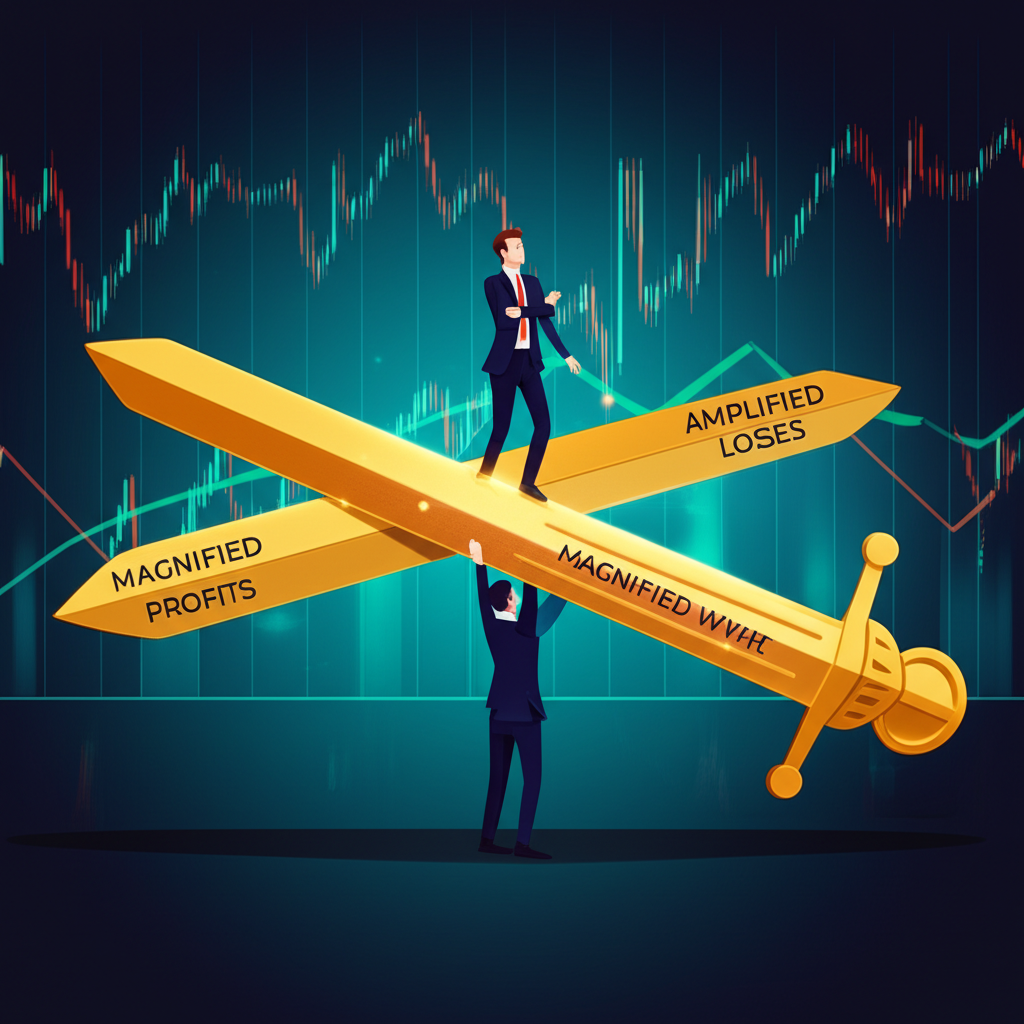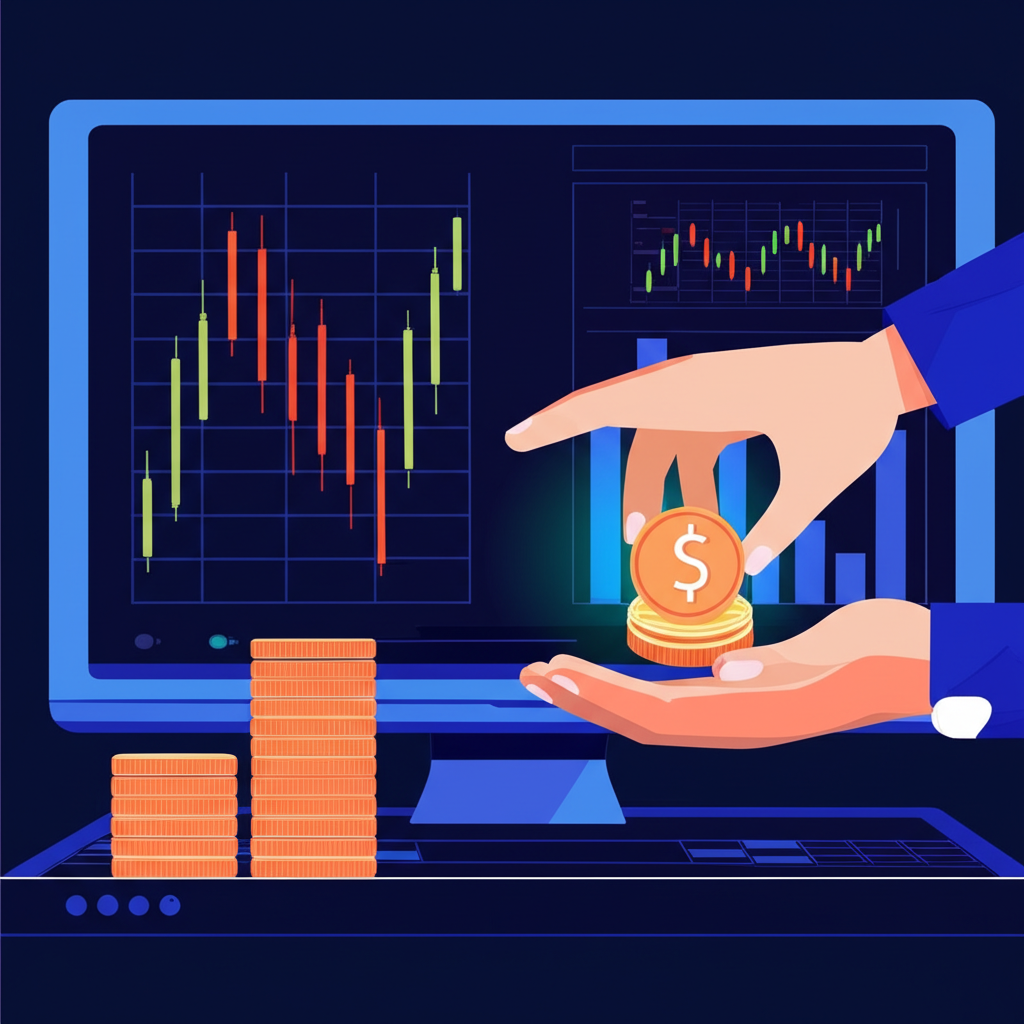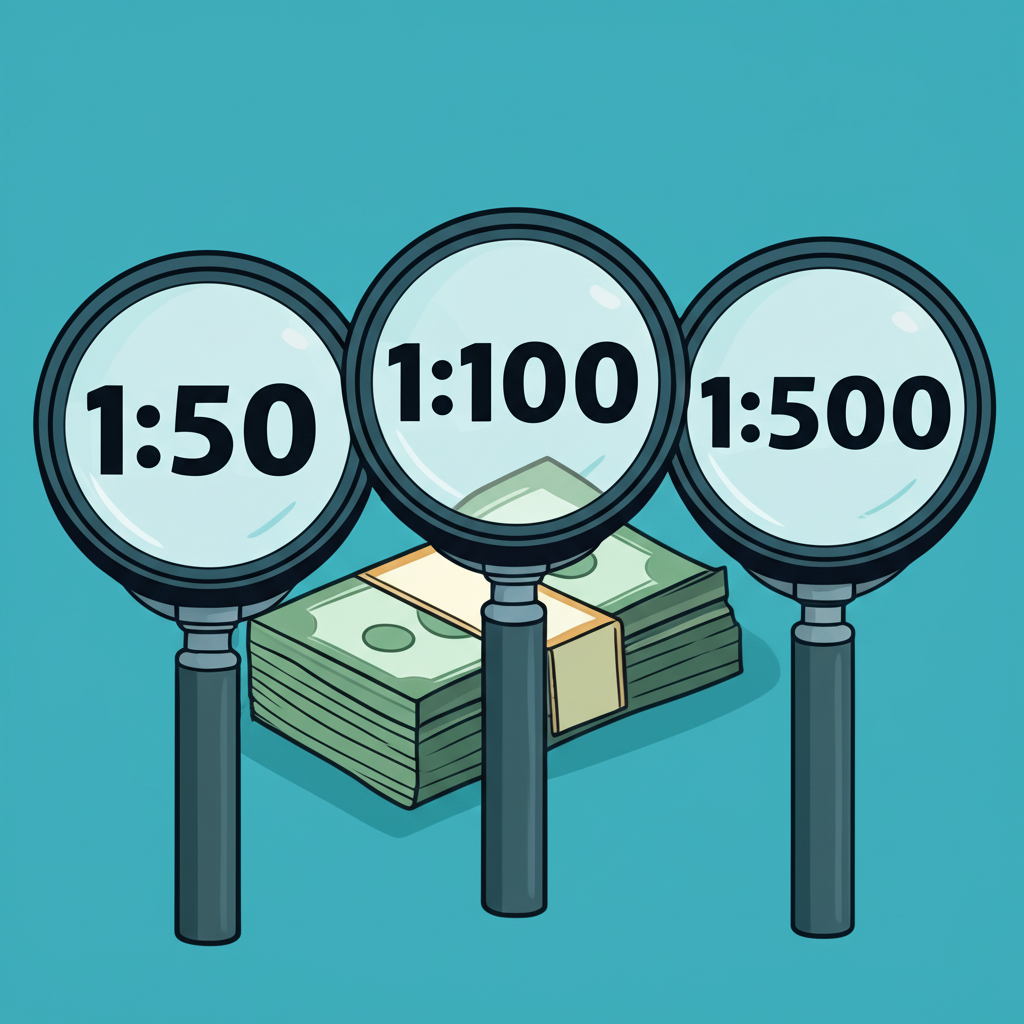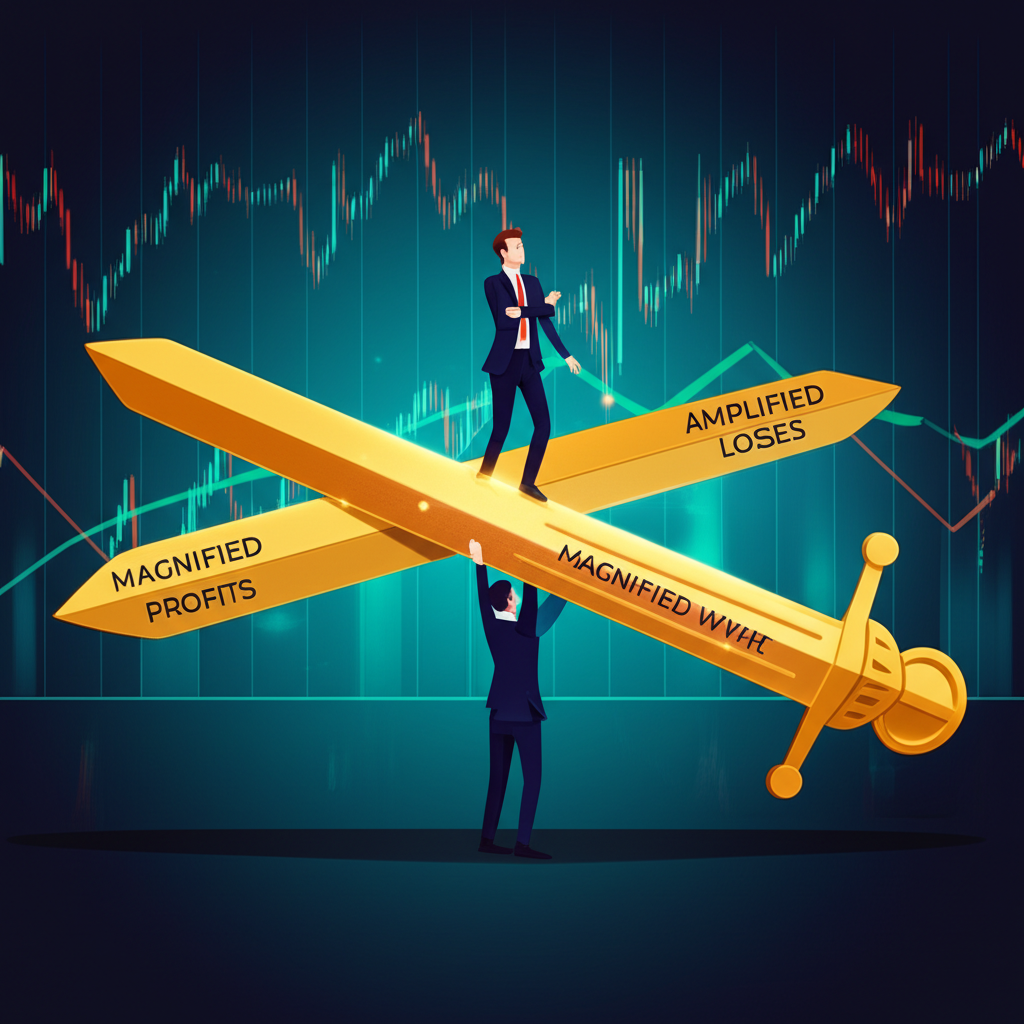Introduction: What is Leverage in Forex Trading?
In the fast-moving world of foreign exchange, leverage stands as one of the most powerful—and often misunderstood—tools available to traders. At its core, leverage in forex trading allows investors to control significantly larger positions than their actual account balance would permit. It works like a loan from your broker, enabling you to increase your market exposure with only a small amount of capital. This feature is especially valuable in the forex market, where even the smallest currency fluctuations can present opportunities—but only if you’re positioned to benefit from them.

The forex market is the largest and most liquid financial market on Earth, with trillions of dollars traded daily. Yet, price movements are typically subtle—often just a few pips. Without leverage, traders would need substantial capital to generate meaningful returns from these minor shifts. Leverage levels the playing field, allowing retail participants to engage with the same instruments used by institutions. But this access comes at a cost: while gains can be dramatically enhanced, so too can losses. Understanding how leverage functions—and how to manage it wisely—is essential for anyone serious about long-term success in currency trading.
How Does Leverage Work in Forex? The Mechanics Explained
Leverage essentially amplifies your buying power. Imagine being able to open a trade worth $100,000 while only putting up $1,000 of your own money. That’s the reality for many forex traders using 1:100 leverage. Your broker provides the remaining funds, allowing you to take on larger positions and potentially reap greater rewards from small market moves. However, this borrowed capital also means that every movement, whether favorable or not, impacts your account balance more intensely.

This system operates through a mechanism known as margin, which acts as collateral for your leveraged trades. It’s not a fee or charge, but rather a portion of your equity that your broker sets aside to keep your positions open. The higher the leverage, the less margin you need—and the thinner your safety buffer becomes. This delicate balance is what makes leverage both attractive and dangerous, particularly for those who don’t fully grasp its implications.
Understanding Leverage Ratios (e.g., 1:50, 1:100, 1:500)
Leverage is expressed as a ratio—common examples include 1:50, 1:100, and 1:500. These numbers show how much market exposure you can gain relative to your own capital. For instance:
- 1:50 means every dollar you invest controls $50 in the market.
- 1:100 means $1 controls $100.
- 1:500 means $1 controls $500.

With a $1,000 account and 1:100 leverage, you could open a position worth up to $100,000. That’s the equivalent of one standard lot in major currency pairs. While this kind of exposure might seem exciting, it also means your account is highly sensitive to price changes. A shift of just 1% against your position could wipe out your entire margin, depending on your trade size and risk controls.
The Role of Margin in Leveraged Trading
Margin is the cornerstone of leveraged trading. It refers to the amount of your own capital that must be reserved to maintain open positions. Think of it as a security deposit—your broker holds it to ensure you can cover potential losses. The margin requirement depends directly on your leverage level. Higher leverage reduces the margin needed, but increases risk.
For example, opening a $100,000 position (one standard lot) requires:
- 1:50 leverage → $2,000 margin required
- 1:100 leverage → $1,000 margin required
- 1:500 leverage → $200 margin required
Your available margin is the portion of your equity not currently tied up in open trades. If losses accumulate and your equity drops below a critical threshold—often a percentage of the required margin—you’ll receive a margin call. At that point, you’ll either need to deposit more funds or face automatic position closures to prevent further losses.
Real-World Example: Trading with Leverage
To see leverage in action, consider this practical scenario:
You have a $5,000 trading account and decide to use 1:100 leverage to buy one standard lot of EUR/USD at 1.1000.
- Trade value: 100,000 × 1.1000 = $110,000
- Margin required: $110,000 ÷ 100 = $1,100
- Pip value: $10 per pip for a standard lot
Scenario A: Profitable Trade
EUR/USD rises by 50 pips to 1.1050.
Profit = 50 pips × $10 = $500
New account balance: $5,500 (a 10% return)
Scenario B: Losing Trade
EUR/USD falls by 50 pips to 1.0950.
Loss = 50 pips × $10 = $500
New account balance: $4,500 (a 10% loss)
This example illustrates the symmetrical impact of leverage: the same market move produces equal percentage gains or losses relative to your capital. The power of leverage lies in its ability to magnify results—but it doesn’t distinguish between profit and loss.
The Advantages of Using Leverage in Forex
When applied wisely, leverage offers tangible benefits that make forex trading accessible and potentially rewarding—even for those starting with limited funds.
Capital Efficiency and Magnified Returns
Leverage is fundamentally about efficiency. It enables traders to maximize the potential of small accounts by increasing exposure to market movements. A trader with $1,000 might only control $1,000 without leverage, but with 1:100, they can influence $100,000 worth of currency. This means even modest price swings—just a few dozen pips—can generate significant returns on invested capital.
For instance, a 1% move in a $100,000 position yields $1,000 in profit. On a non-leveraged account, achieving that return would require investing the full amount. With leverage, the same gain comes from a fraction of the capital, improving capital efficiency and opening doors to consistent compounding over time.
Access to Larger Markets
Before the rise of online brokers, the forex market was largely dominated by banks and institutional players due to the sheer volume of capital required. Leverage has democratized access, allowing individual traders to participate meaningfully. Retail investors can now trade the same currency pairs, analyze the same charts, and react to global events in real time—all with relatively small trading capital.
This broader participation not only empowers individuals but also contributes to overall market liquidity. More traders mean tighter spreads, faster execution, and better price discovery—benefits that ripple across the entire ecosystem.
The Risks and Disadvantages of Forex Leverage
Despite its advantages, leverage carries significant risks. Used recklessly, it can lead to devastating losses—sometimes in a matter of minutes.
Magnified Losses and Margin Calls
The most critical risk is that losses are amplified just like profits. A trade that loses 50 pips under high leverage can erase 10%, 20%, or even 100% of your account, depending on position size and leverage level. If your equity falls below your broker’s margin requirement, you’ll face a margin call.
At this point, you must either deposit additional funds or risk having your positions closed automatically—a “stop-out.” In volatile markets, such closures can happen rapidly, often before you’ve had time to react. According to data from the UK’s Financial Conduct Authority (FCA), over 70% of retail CFD and forex traders lose money, with excessive leverage and poor risk management cited as primary causes. FCA Study on CFD and Forex Losses
Emotional and Psychological Pressures
Leverage intensifies emotions. Fast wins can breed overconfidence, leading traders to increase position sizes or ignore stop-losses. Conversely, sudden losses can trigger panic, causing impulsive decisions like revenge trading or abandoning a proven strategy.
The psychological strain of watching a highly leveraged position swing wildly can undermine discipline. Many traders fail not because of flawed analysis, but because they lose control under pressure. Mastering emotional resilience is just as important as mastering technical skills when trading with leverage.
Choosing the Right Leverage for Your Forex Trading
There is no universal “best” leverage. The right choice depends on your personal circumstances, goals, and trading approach.
Factors to Consider: Account Size, Risk Tolerance, and Trading Experience
- Account Size: Smaller accounts often lead traders to seek higher leverage to generate noticeable returns. However, this also increases vulnerability. For example, someone asking, “What leverage is good for $100?” should focus on micro-lots and conservative ratios to avoid rapid depletion.
- Risk Tolerance: If you’re uncomfortable with large drawdowns, lower leverage (like 1:30 or 1:50) offers more stability. Aggressive traders may accept higher leverage, but only if paired with strict risk controls.
- Trading Experience: Beginners should treat leverage like training wheels—start low, learn the mechanics, and build confidence. Seasoned traders with tested strategies and emotional discipline can use higher leverage more effectively, but never without safeguards.
Common Leverage Ratios and Their Implications
Different leverage levels serve different purposes:
- Low Leverage (1:30–1:50): Requires more margin per trade, reducing position size and increasing resilience to market noise. Ideal for beginners and conservative strategies.
- High Leverage (1:200–1:500): Demands minimal margin, enabling large exposure with little capital. Offers high reward potential but comes with extreme risk. Best suited for experienced traders using tight risk parameters.
Regulatory Limits on Leverage
Governments impose leverage caps to protect retail investors from excessive risk:
- United States: The NFA and CFTC limit retail forex leverage to 1:50 for major pairs and 1:20 for minors.
- European Union & UK: ESMA and FCA regulations cap leverage at 1:30 for major currency pairs since 2018, with lower limits for other instruments.
- Australia & Offshore Jurisdictions: ASIC-regulated brokers typically offer up to 1:30 for retail clients, while offshore platforms may allow 1:500 or higher, reflecting looser oversight.
These differences highlight how regulatory philosophy shapes market access. While higher leverage may seem appealing, it often comes with fewer consumer protections.
Responsible Leverage Management: Essential Risk Strategies
Leverage is neutral—it becomes dangerous only when misused. Smart traders don’t avoid leverage; they master it through disciplined risk management.
Position Sizing and Stop-Loss Orders
The foundation of safe leveraged trading rests on two pillars:
- Position Sizing: Limit risk per trade to 1–2% of your account. For a $5,000 account, that means risking no more than $50–$100 per trade. This ensures longevity, even after a string of losses.
- Stop-Loss Orders: Always define your exit point before entering a trade. A stop-loss automatically closes your position at a predetermined level, capping potential losses. When combined with proper sizing, it turns leverage from a liability into a controlled tool.
Understanding Your Broker’s Margin Policy
Brokers vary in how they handle margin requirements and account protection. Before trading, review:
- Margin Call Level: At what point will you be alerted? (e.g., 80% of used margin)
- Stop-Out Level: When will positions be closed automatically? (e.g., 50% equity)
- Negative Balance Protection: Does your broker ensure you can’t lose more than your deposit? This is vital during gaps or extreme volatility.
Knowing these thresholds helps you manage risk proactively rather than reactively.
Avoiding Over-Leveraging: The Pitfalls
Over-leveraging—using more leverage than your strategy or capital supports—is one of the fastest paths to account failure. Signs include:
- Constant margin warnings
- High stress during normal market fluctuations
- Inability to withstand small drawdowns
Even a well-reasoned trade can fail due to timing or unexpected news. Over-leveraged accounts lack the breathing room to survive such events. The goal isn’t to use all available leverage—it’s to survive long enough to let your strategy work.
Common Myths and Misconceptions About Forex Leverage
Misunderstandings about leverage often lead to poor decisions. Let’s clear up some common myths:
- Myth: Higher leverage automatically means higher risk.
Reality: Risk comes from position size, not leverage alone. You can have 1:500 leverage but trade tiny lots, risking only 1% of your account. The tool isn’t dangerous—the misuse is. - Myth: Only experts should use leverage.
Reality: All forex traders use leverage. The difference lies in discipline. Beginners can trade safely with small sizes, low ratios, and stop-losses. - Myth: Leverage guarantees fast profits.
Reality: It amplifies both outcomes. Without a solid strategy and risk control, leverage accelerates losses faster than gains. - Myth: You can lose more than you deposit.
Reality: Most regulated brokers offer negative balance protection, especially in the EU, US, and UK. Always confirm this feature before trading.
By separating fact from fiction, traders can approach leverage with clarity and confidence.
Conclusion: Harnessing Leverage for Sustainable Forex Trading
Leverage in forex trading is a double-edged sword—capable of turning small accounts into profitable ventures or wiping them out in hours. Its power lies not in the numbers themselves, but in how traders wield them. With the right knowledge, discipline, and risk controls, leverage becomes a strategic ally rather than a threat.
Success starts with understanding the mechanics: how margin works, how ratios affect exposure, and how regulations shape availability. But it’s sustained through behavior—consistent position sizing, unwavering use of stop-losses, and emotional control. Avoid the temptation to over-leverage, even when markets seem predictable.
Ultimately, the goal isn’t to chase quick wins, but to build a resilient trading practice. Leverage, when used responsibly, can amplify results over time. But lasting success comes not from how much you control, but how well you manage what you have. Continuous learning, adaptability, and respect for risk are the true foundations of a sustainable forex journey.
Frequently Asked Questions About Leverage in Forex Trading
What exactly does 1:500 leverage mean in forex trading, and how does it impact my capital?
1:500 leverage means that for every $1 of your own capital, you can control $500 worth of currency in the market. For instance, with a $1,000 account and 1:500 leverage, you can open positions worth up to $500,000.

留言